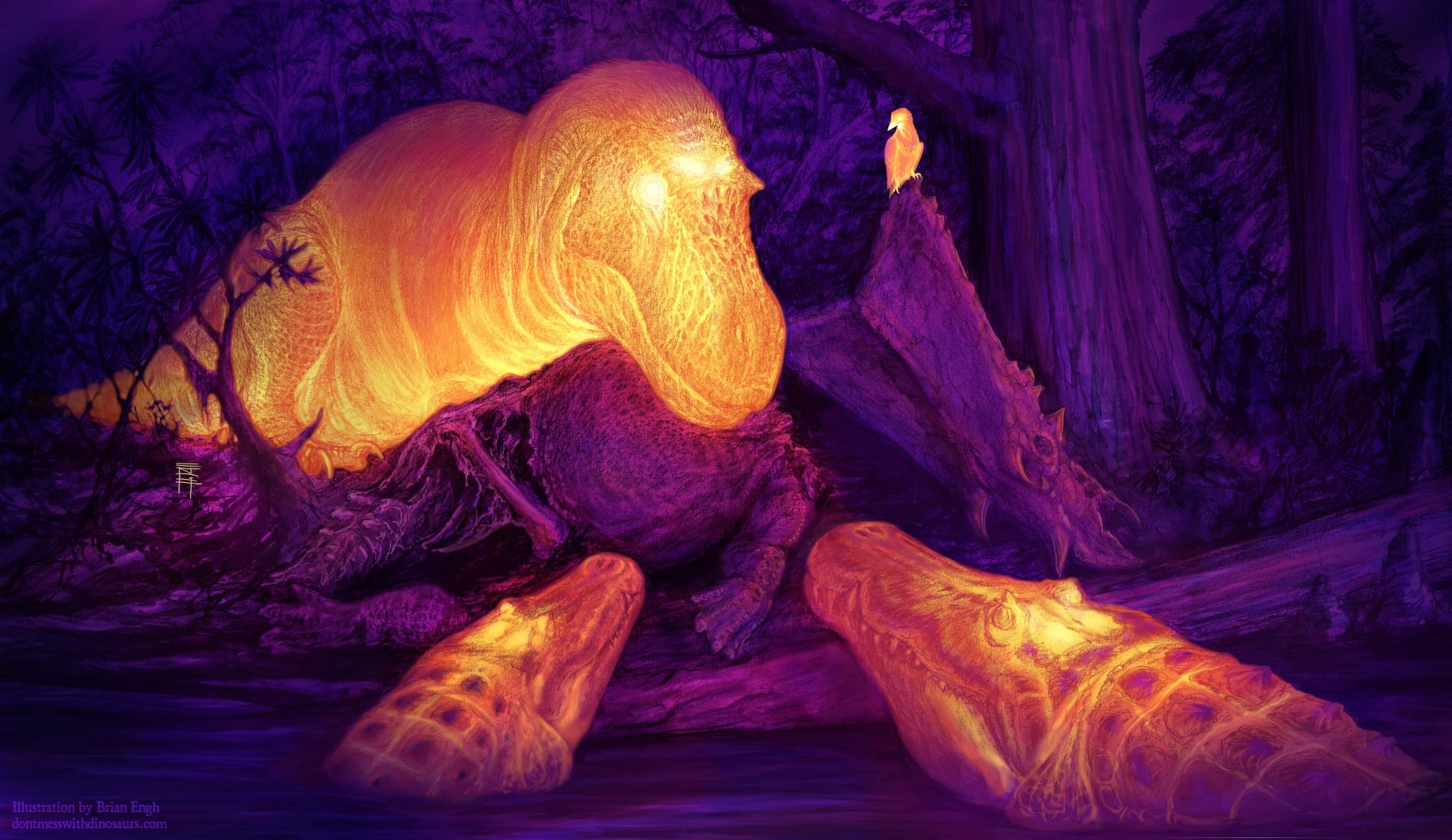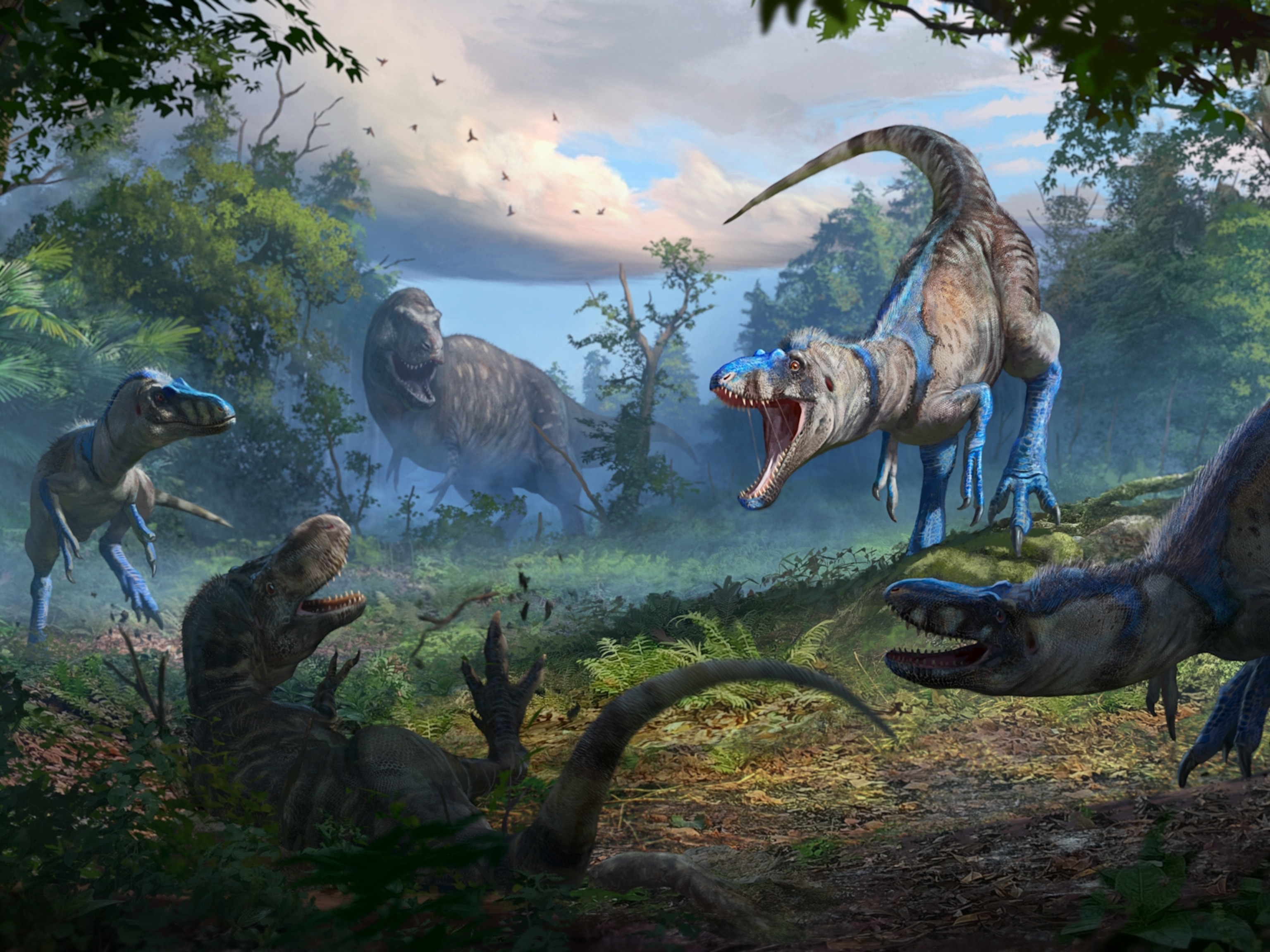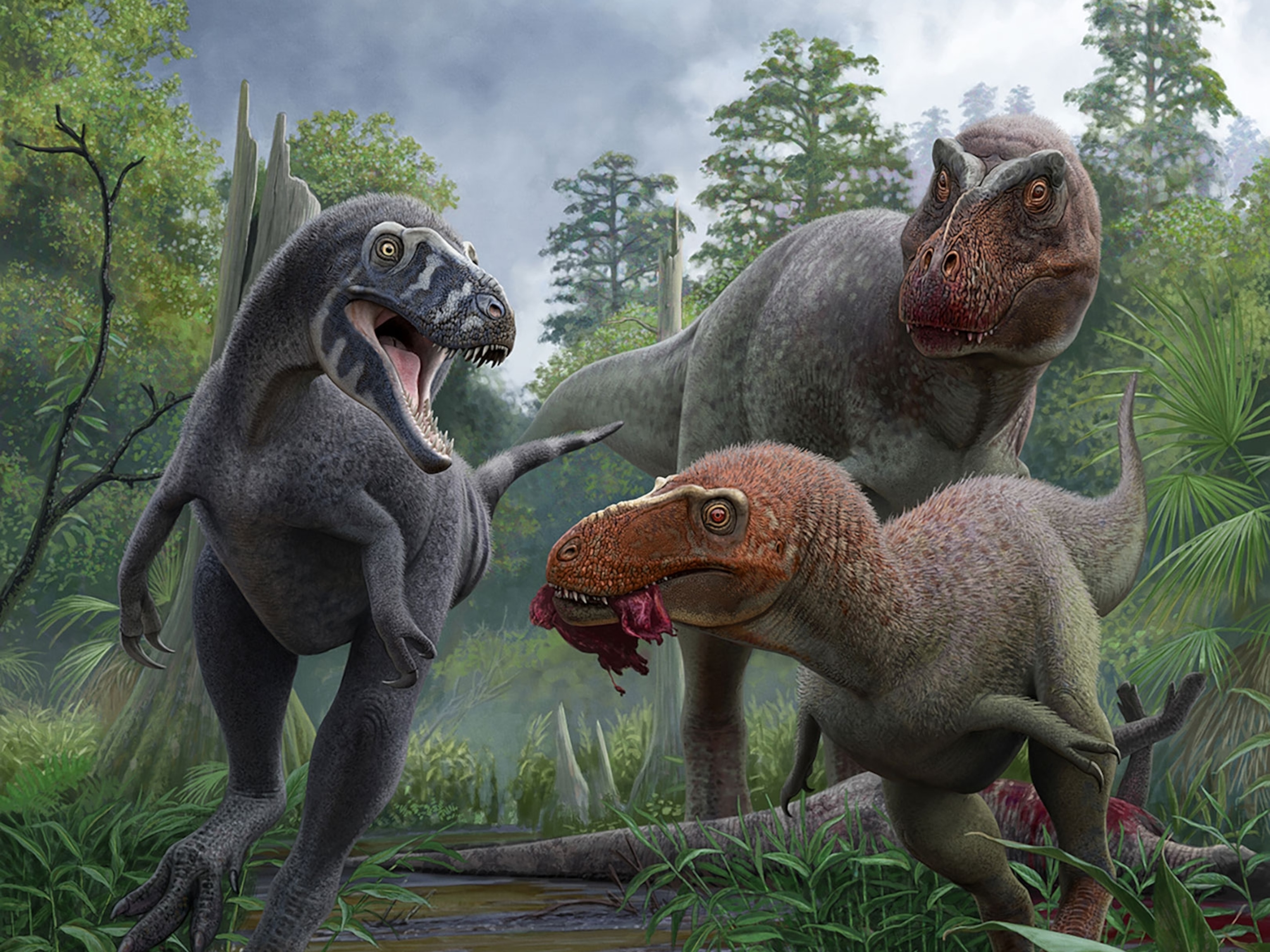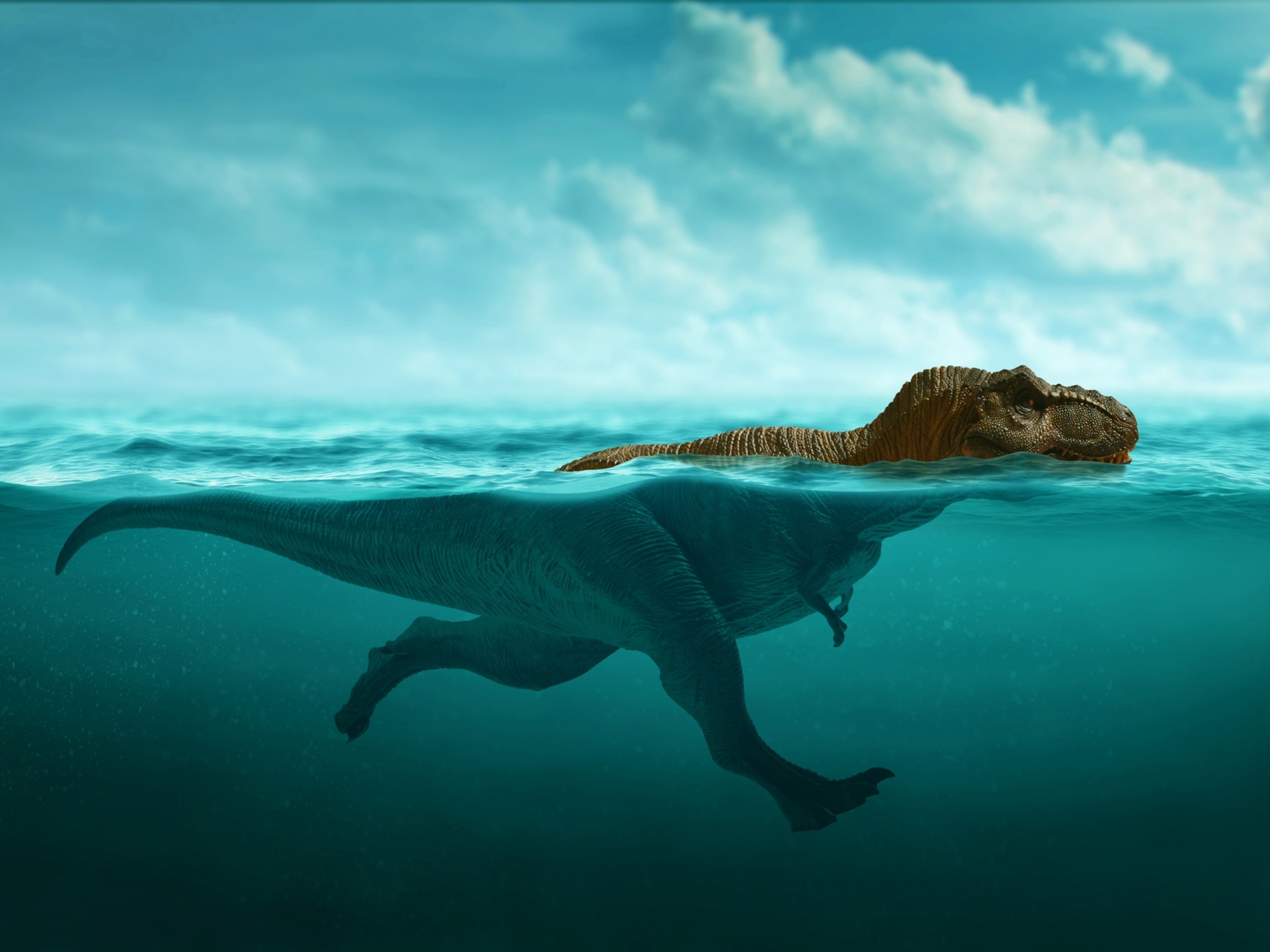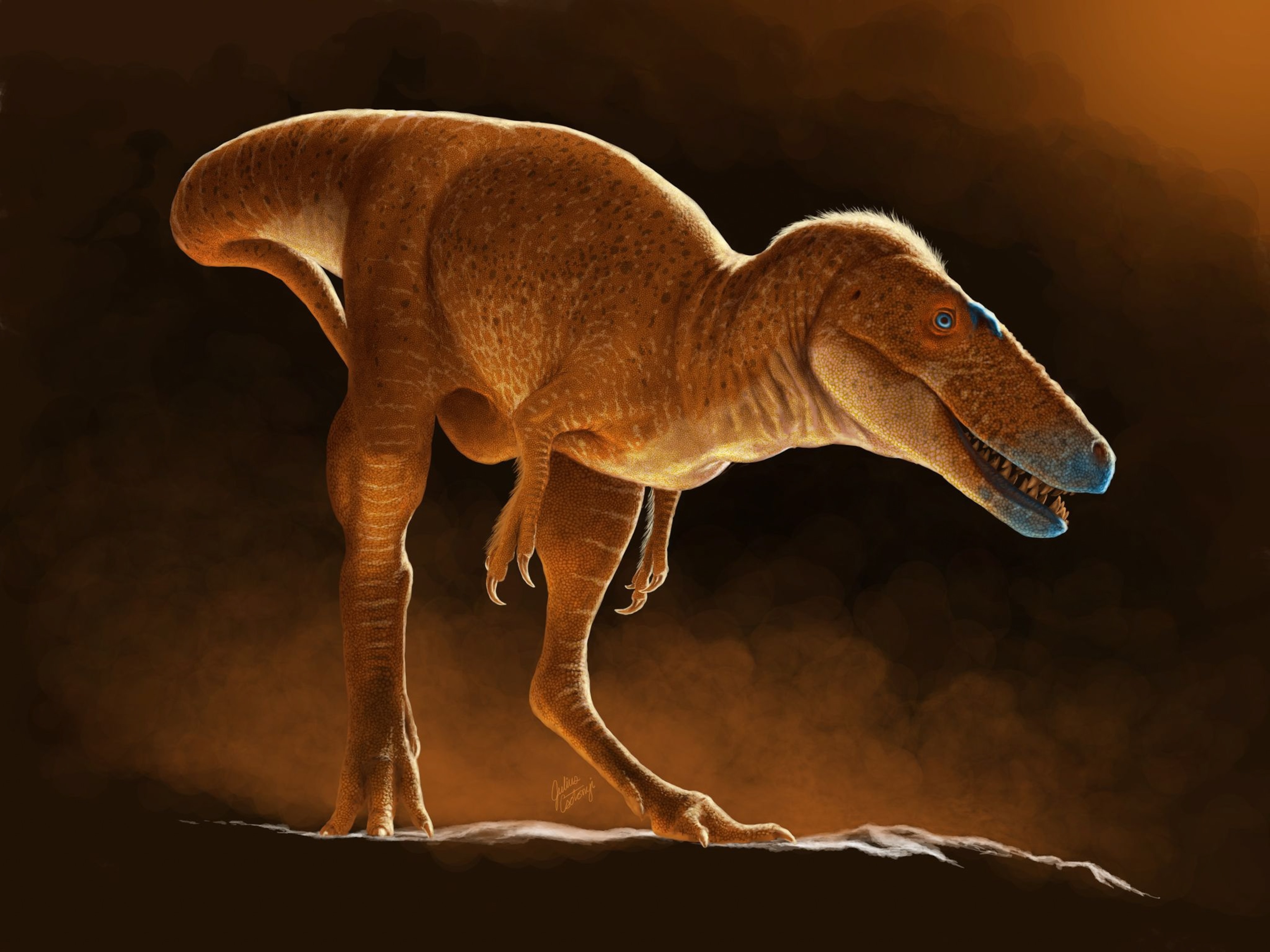To ward off overheating, large animals such as elephants and rhinos had to evolve strategies to keep cool. Dinosaurs like Tyrannosaurus rex likely faced the same problem—and new research finds that the huge carnivores solved it by developing giant air conditioners in their heads.
Researchers led by Casey Holliday looked at large holes in the tops of carnivorous dinosaur skulls called dorsotemporal fenestrae. Careful anatomical study revealed that the cavities probably contained tissue rich with fat and blood vessels.
These structures may have been useful for dumping heat into the environment when dinosaurs were running too hot and absorbing heat when they got cold, the team reports in the journal The Anatomical Record.
“We found that the big theropod dinosaurs—and even some of the little ones, like Velociraptor—had these kinds of pouches that probably had blood vessels in them and were helpful for thermal regulation,” says Holliday, a paleontologist at the University of Missouri School of Medicine.
Hiding in plain sight
For more than a century, paleontologists thought that these holes helped hold the jaw muscles of species such as T. rex, since in dinosaurs and their living kin, birds, the depressions lie right in front of major jaw-muscle openings.
“Pretty much everyone assumed these were simply extended spots for those muscles to expand into,” says Thomas Holtz, a tyrannosaur expert at the University of Maryland College Park, who was not one of the study authors.
But when Holliday studied these skull spaces in dinosaurs, alligators, and other animals, the old explanation didn’t add up. For one, if the space anchored T. rex jaw muscles, the muscle would have had to come up from the jaw, take a 90-degree turn, and then snake along the roof of the skull. Furthermore, the bone’s smooth surface suggested that muscle fibers and tendons didn’t attach there.
Instead, when the researchers studied the anatomy of modern alligators and birds—some of the closest living relatives to nonavian dinosaurs—they saw that these animals tended to fill the region with fat and blood vessels. Much like the heat exchanger on an air-conditioning unit, the structure could have allowed blood to radiate or absorb heat from the environment.
To test their interpretation, researchers used thermal imaging cameras to observe the heads of modern alligators at the St. Augustine Alligator Farm Zoological Park in Florida. The footage showed that at different points of the day, the skull area containing the dorsotemporal fenestrae was relatively warmer or cooler than the rest of the animal’s head, depending on whether the animals needed to dissipate heat or collect it.
“One of the major physiological challenges that large animals have is being able to shed heat,” Holliday says. “If big theropod dinosaurs were warm-blooded … then they too probably had challenges dissipating heat in some instances.”
For big theropod dinosaurs such as T. rex, large cooling structures in the head would have been extremely helpful for maintaining a constant brain temperature—particularly if they got too hot.
“You can't uncook a brain any more than you can uncook an egg,” Holtz says.
A role in display?
In related work, New York Institute of Technology paleontologist Jason Bourke found in 2018 that a group of armored dinosaurs called ankylosaurs may have had large, convoluted nasal passages filled with blood vessels. As the animals breathed, these vessels would have helped dissipate excess heat to the environment. Bourke says that the new research is compelling, especially since his team didn’t find evidence for similarly expanded nasal passages in carnivorous theropods.
“This new study hints at an alternate way that theropods may have been regulating their brain and eye temperature,” he says.
Holliday hopes the findings will lead others to test the cooling-structure hypothesis. It’s also possible that a concentration of blood vessels in this region of the skull could also have helped support display structures on the heads of some dinosaurs.
In extinct dinosaurs, the structures may have even been proportionally bigger than those seen in living animals, Holliday notes. And in theropods such as T. rex, the vessel-packed structures would have covered a large area on top of the head. Holliday also points out that some horned dinosaurs, such as Triceratops and Chasmosaurus, have signs of similar structures in their skull roofs that are tantalizingly close to their neck frills.
It’s possible that dinosaurs may have used these vessel networks for color-changing displays, “even if it was as simple as scales that flushed and blanched with the underlying blood flow,” Bourke says.
